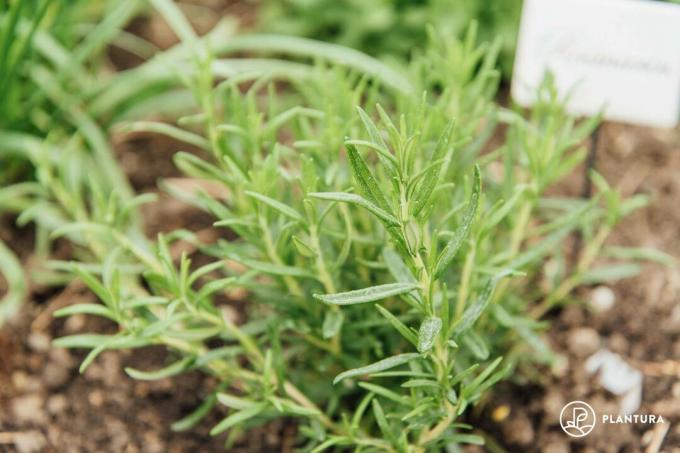Thanks to its aromatic flavor, rosemary is an all-rounder in Mediterranean cuisine. We will show you the differences between the different types.

rosemary (Rosmarinus officinalis) belongs exactly like lavender (Lavandula angustifolia) and sage (Salvia officinalis) to the mint family (Lamiaceae) and thus joins a group of popular Mediterranean herbs. On the market, different types of rosemary enrich the variety with their own growth forms and aroma properties. We introduce you to the most important and interesting representatives of the spicy subshrub.
- Arp: growing in breadth and relatively hardy variety; is noticeable by its rather greyish needles and stands out due to a light blue flower; Thanks to its better tolerance to frost, it is well suited for colder areas.
- Blue Tuscan: extremely upright and strongly growing variety with conspicuously large needles.
- Blue lip: thanks to the compact growth, well suited for cultivation in pots.
- Boules: cultivar that creeps close to the ground; comparatively hardy; in addition to an extremely good taste with striking light blue ornamental flowers.
- French rosemary: fast-growing traditional French variety; light blue flowers and good aroma; strong and robust.
- Gorizia: bright blue-purple flowers adorn this tall cultivar; Winter protection required.
- Hill Hardy: Texan selection with excellent winter hardiness; good flavor.
- Majorca Pink: pink flowers adorn the Spanish variety; loves warmth and in need of frost protection even in winter; compact growth with extremely short needles.
- Rex: profuse, light-flowering variety; also vigorous and extremely robust on poor soils.
- Salem: optically very beautiful, deep blue flower; extremely susceptible to frost damage and can therefore only be grown in milder areas.
- Santa Barbara: creeping rosemary variety; well suited for warm summer and cold winter climates; blooms in abundance in a brilliant deep blue.
- Veitshochheim: selected in the Bavarian Horticultural Research Institute in Veitshöchheim according to the harsh local climate; particularly hardy, robust and rapidly growing.
As you have read, you will have noticed that there are also differences between the varieties when it comes to rosemary. The most important thing is to check the suitability of the variety for the specific climate of the location. This is the only way to enjoy the distinctive aroma of the fragrant subshrub in your own garden for a long time.
If you have now decided to plant the Mediterranean herb in the garden yourself, you will find our best here Tips for fresh rosemary from your own bed.

I studied horticulture and I am a real village child. I grow herbs, sweet fruits and vegetables, using only organic products. In addition to my love for nature, I like to cook for my life - preferably with fresh vegetables from my garden, of course.
Favorite fruits: elderberries and raspberries
Favorite vegetables: black cabbage, artichokes and asparagus
Previous posts

The aromatic herb refines sweet desserts, sauces or punch bowls in spring. When and how to ..

The herb with the inconspicuous flower appears every spring in gardens and deciduous forests. How one..

Mint gives off its refreshing aroma, especially when dried and as a tea. Everything to the right ..
